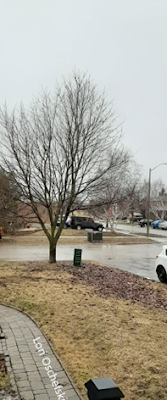 |
| A fund raising card for the National Fund, 1916 |
Of course given the lack of state intervention in social problems through the previous century I shouldn’t be surprised but never the less it is amazing that the wives of servicemen and those laid off because of the collapse in trade ended up asking for help from funds raised by donations and subscriptions.
As early as August 6th just two days after the British declaration of war Mr Will Crooks, the Labour MP for Woolwich asked the Prime Minister “what provision is being made for the Reserve men's wives and children, both Navy and Army?”*
And here in Manchester the Manchester Guardian reported that
“Applications for relief from the National Fund are growing rapidly in Manchester........... Up to Saturday 600 applications had been received by the
 |
| Queueing for potatoes, Manchester, 1914 |
On Monday there were 900 more and yesterday brought still another thousand.
Altogether, therefore, about 2,500 applications had been registered up to last night.
There are single men and women among them, of course, but in the general run the applicant stands for a family, and 8,000 is probably a low estimate of the number of men, women, and children represented.
Everything points at present to a still more rapid increase in the next few weeks, and with the same state of things general throughout the country the slender resources of the National Fund may soon be exhausted by the absence of other provision.”*
 |
| Manchester Guardian, September 15, 1914 |
Some firms in the heady weeks after the war began agreed to meet some or all of the wages of men who had volunteered, but this was not universal.
Added to which the downturn in trade had led to the introduction of short time by some employers and a steady rise in unemployment.
 |
| Manchester 1914 |
Many dockers were unable to get work and it is feared that the number of unemployed will increase daily.”
This was mirrored in the city where “work is rapidly lessening [and] some warehouses are closing at unusually early hours. Employers are inclined to adopt the system of short time, with the object of equalising as far as possible the hardships which the workers must suffer.”**
And the plight of the textile towns around Manchester was even worse.
 |
| Daily Mail, June 7 1916 |
It was administered locally and here in Manchester there were two sub committees, one dealing with the dependants of servicemen and the other with those made unemployed.
The relief was paid in the form of vouchers which were accepted by trades people.
The dire predictions that the fund would be exhausted proved not to be the case as trade began to pick up and by December applications were down compared to October.
As ever it was the low paid workers, such "as carters, charwomen and out porters” who were the worst hit.****
These amounted to 2000 out of 5,400 cases between August and October 24, and were closely followed by those in the tailoring trade and those making a living from taking in lodgers.
The newspapers kept a regular tally of both the amount subscribed locally and the names of those who made a contribution.
These ranged from £100 given to the Manchester branch of the National Fund in September by McKean’s Patent Size Company to £32 from the Macfadyn Memorial Congregational Church down to £10 from the employees of Fred Smith and Co.
Along with such contributions there were fund raising flags that could be bought on street corners, and a huge number of picture postcards specially marketed to raise money.
 |
| Defenders of the Empire, 1916 |
And there were plenty of charities to give to.
During the war 18,000 were established providing everything from “comforts” for the troops to clothes for children and help to refugees.
They would raise a staggering amount of money and distribute vast amounts of aid.
And in turn so was the extent to which the public volunteered for everything from running the charities, offering up their homes to refugees and servicemen recovering from wounds along with staffing and funding the Red Cross Hospitals.
That said I still remain a little bemused at a war effort which relied so heavily on voluntary contributions and while that is not a particularly historical observation it is still a personal one.
Pictures;Dedicated to the Army and the Navy By the Kings Publishers, Raphael Tuck & Sons Ltd from the series Defenders of the Empire, 1914-1916, courtesy of Tub db, https://tuckdb.org/ Queue for Potatoes, 1914, courtesy of Manchester Libraries, Information and Archives, Manchester City Council, http://images.manchester.gov.uk/index.php?session=pass, and advert from Daily Mail from the collection of David Harrop
With additional research from the Archives & Study Centre, at the People’s History Museum, http://www.phm.org.uk/archive-study-centre/
* RESERVE MEN (WIVES AND CHILDREN). HC Deb August 6 1914 vol 65 cc2062-3, http://hansard.millbanksystems.com/commons/1914/aug/06/reserve-men-wives-and-children
**DISTRESS ON THE INCREASE, THOUSAND APPLICATIONS YESTERDAY, Manchester Guardian, August 26, 1914
***Work Rapidly Lessening, Manchester Guardian, August 14, 1914
****Unemployment, since the war began and now, Manchester Guardian December 12 1914.












































